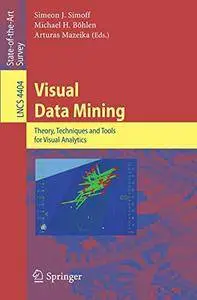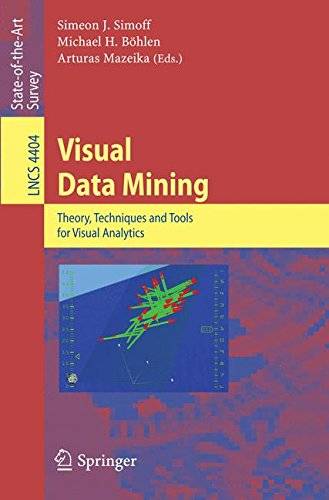Visual Data Mining: Theory, Techniques and Tools for Visual Analytics by Simeon Simoff
English | 18 July 2008 | ISBN: 3540710795 | 407 Pages | PDF | 4 MB
English | 18 July 2008 | ISBN: 3540710795 | 407 Pages | PDF | 4 MB
Visual Data Mining―Opening the Black Box Knowledge discovery holds the promise of insight into large, otherwise opaque datasets. Thenatureofwhatmakesaruleinterestingtoauserhasbeendiscussed 1 widely but most agree that it is a subjective quality based on the practical u- fulness of the information. Being subjective, the user needs to provide feedback to the system and, as is the case for all systems, the sooner the feedback is given the quicker it can in?uence the behavior of the system. There have been some impressive research activities over the past few years but the question to be asked is why is visual data mining only now being - vestigated commercially? Certainly, there have been arguments for visual data 2 mining for a number of years – Ankerst and others argued in 2002 that current (autonomous and opaque) analysis techniques are ine?cient, as they fail to - rectly embed the user in dataset exploration and that a better solution involves the user and algorithm being more tightly coupled. Grinstein stated that the “current state of the art data mining tools are automated, but the perfect data mining tool is interactive and highly participatory,” while Han has suggested that the “data selection and viewing of mining results should be fully inter- tive, the mining process should be more interactive than the current state of the 2 art and embedded applications should be fairly automated . ” A good survey on 3 techniques until 2003 was published by de Oliveira and Levkowitz .



